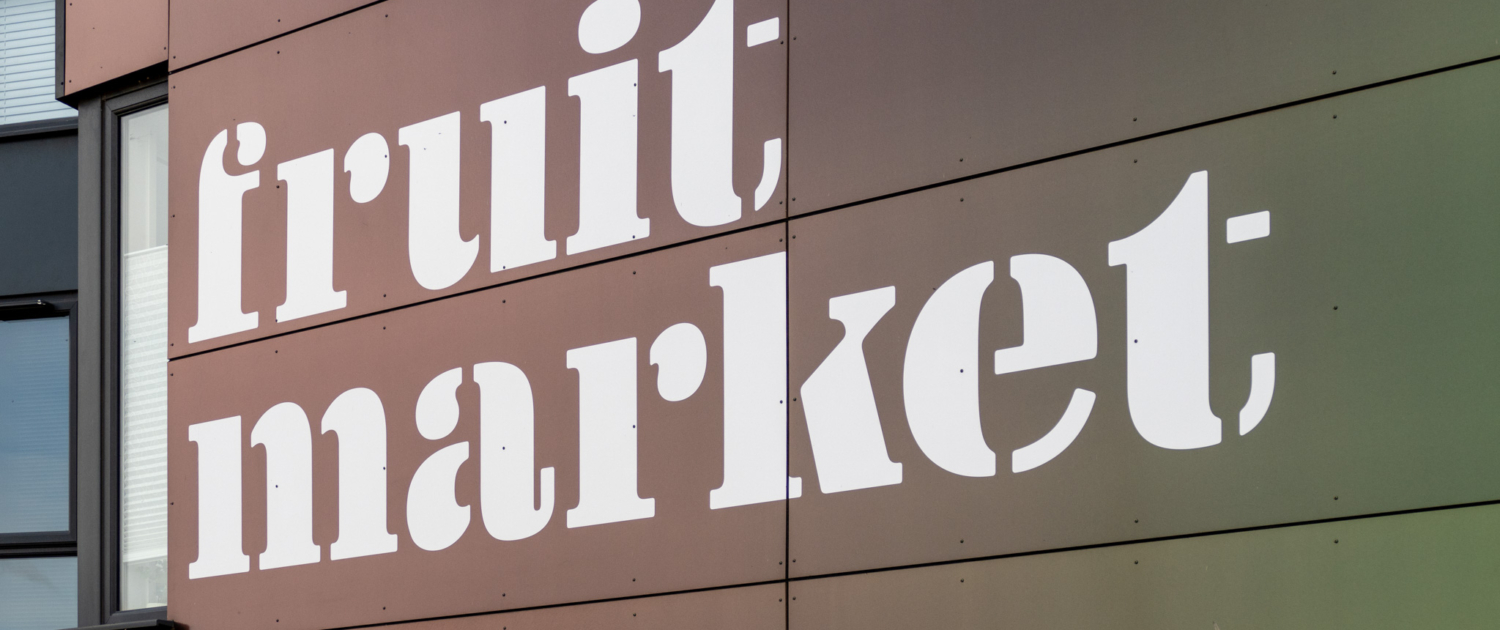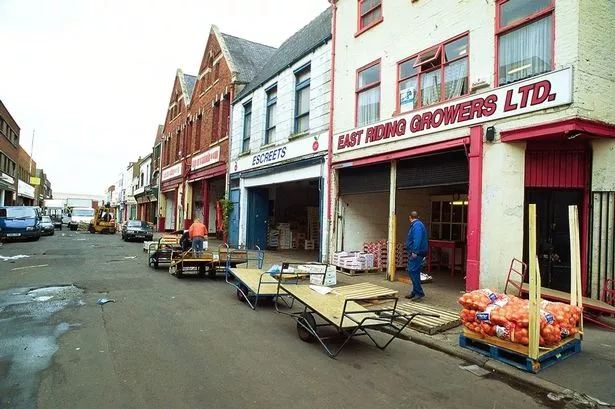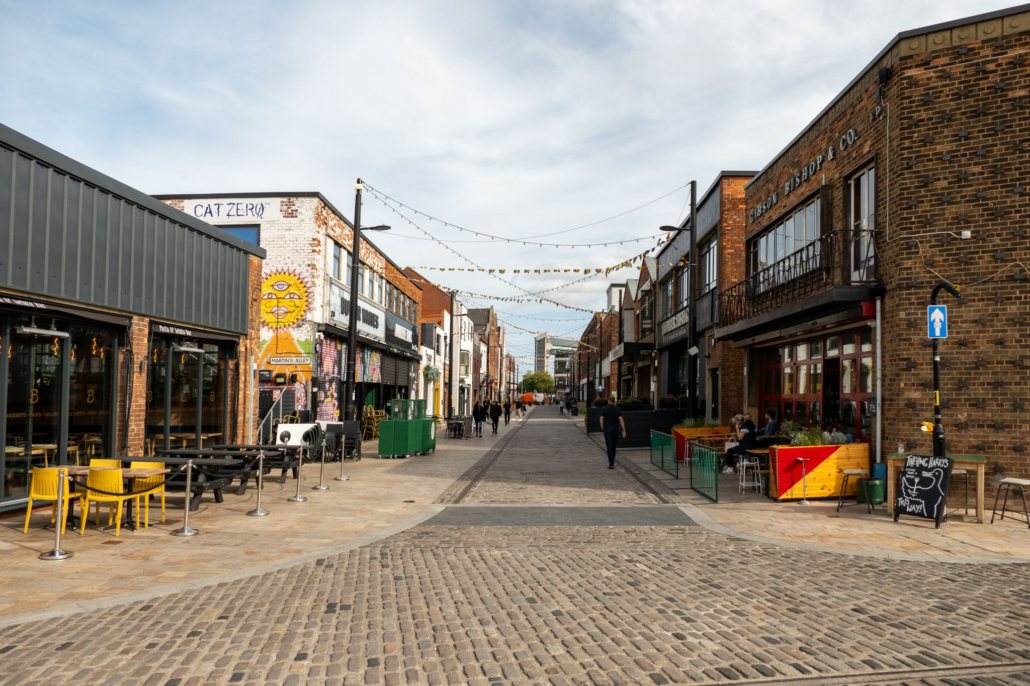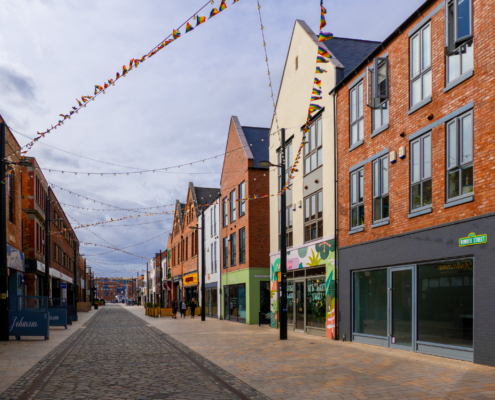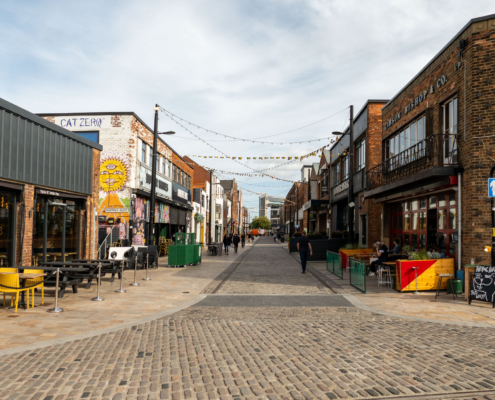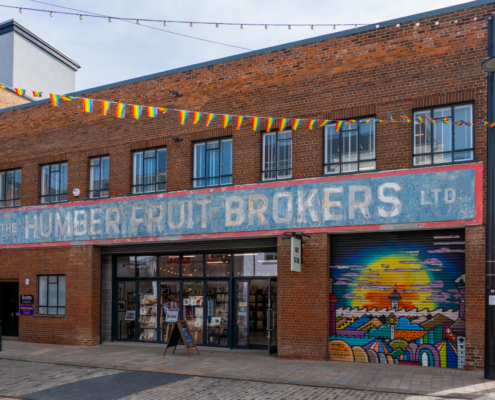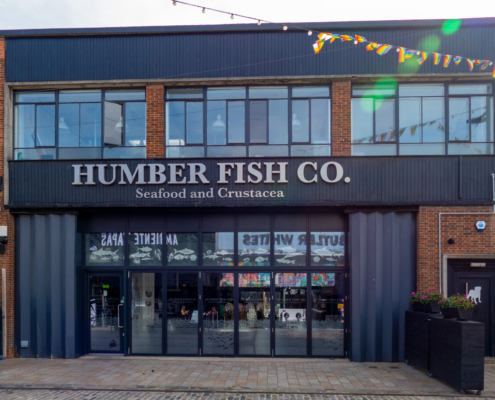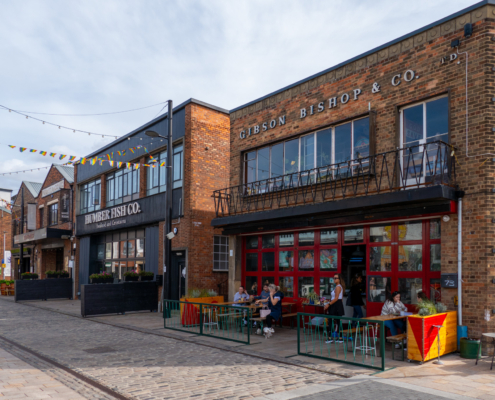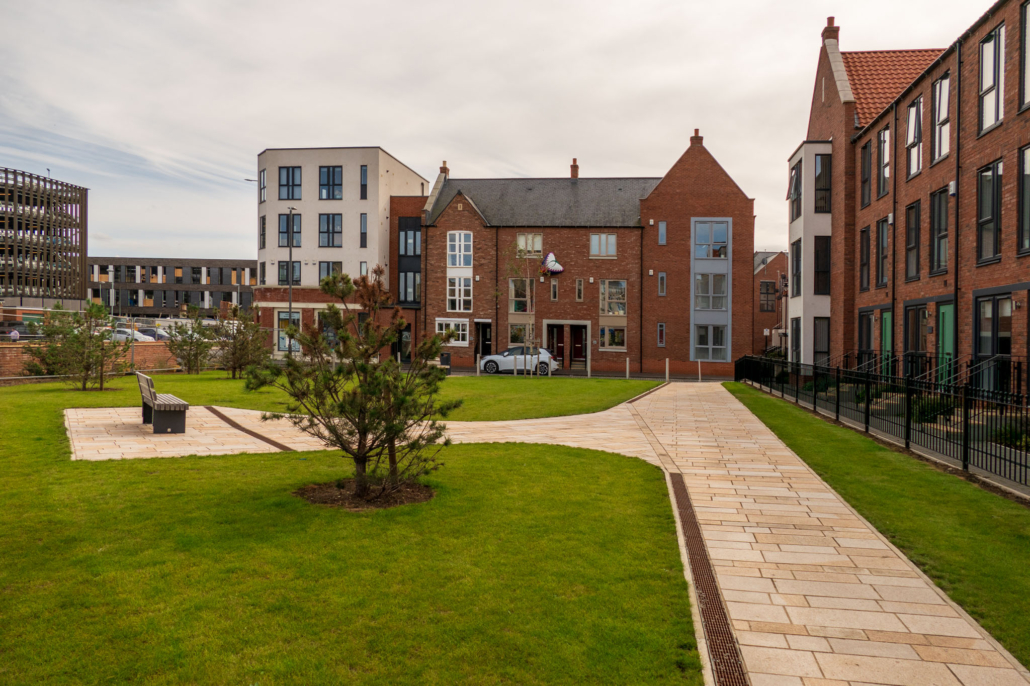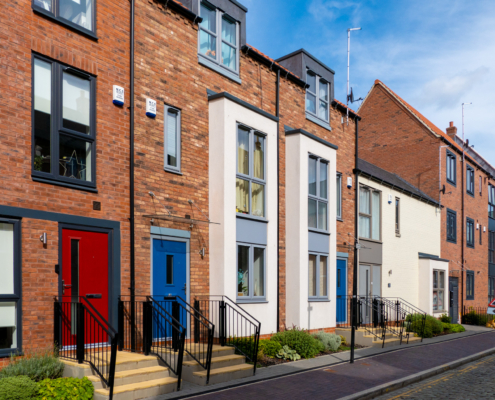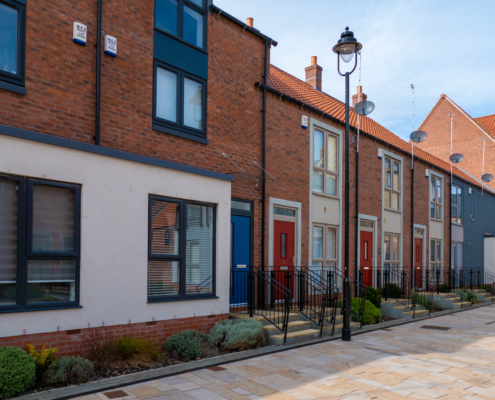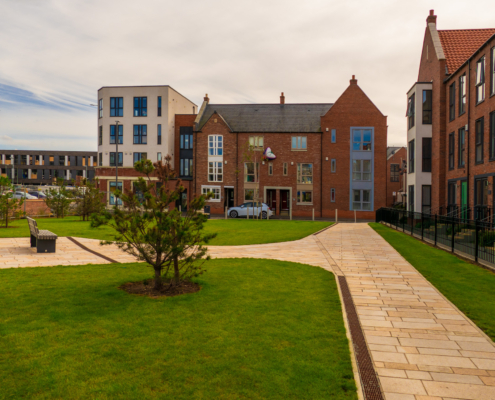Urban Regeneration in Hull: Fruit Market
Introduction
Hull’s Fruit Market, adjacent to the Humber Dock, has been central to Hull’s history since the 16th century. Its significance peaked during the 19th century due to the trade of fruit and vegetables.
Fruit and vegetables fresh off ships berthed in the city’s docks would be traded, packed, and sent for distribution around the country.
Many of the buildings in the Fruit Market were damaged and destroyed during the Second World War. Warehouses and homes of all sizes were built in place of the destruction during the 40’s and 50’s.
Despite its rich past, the Fruit Market declined during the 20th century, leading to the need for a large-scale regeneration project to restore the area. The few remaining traders were relocated to an out-of-town site in 2009.
The Fruit Market area experienced high levels of urban deprivation with many derelict industrial sites, poor quality housing and high unemployment rates.
An £83.6m regeneration project was launched to revitalise the Fruit Market, emphasising its economic, cultural, and historical significance to Hull.
Why did the area need regeneration?
The Fruit Market desperately needed regeneration after the docks were closed and fruit traders relocated. The area was one of the most deprived communities in the country, where unemployment was high, educational achievement was low, and there was a high incidence of poor health among the population. The area needed improved services, and the quality of the environment required improvement.
- Social Reasons:
- Cultural Decay: Important cultural landmarks like the Wesleyan Chapel, circus, and theatre lost their prominence over time.
- Community Disintegration: The departure of the fruit trade and the effects of the World Wars led to social fragmentation, a high level of deprivation, and a decline in local community spirit.
- Environmental Reasons:
- War Damage: Much of the area’s infrastructure was lost to bombings during the World Wars. Although rebuilding occurred in the 1940s and 50s, the area never regained its former essence.
- Deterioration: Post the fruit trade’s relocation in 2009, numerous structures became derelict, impacting the area’s aesthetics and usability.
- Economic Reasons:
- Loss of Economic Activity: The decline of the fruit trade, once the area’s economic backbone, left a financial void, reducing commercial activities and job opportunities.
How was the Fruit Market redeveloped?
The Hull Fruit Market is a crucial priority within Hull’s Big City Plan. It aims to create and sustain city jobs and boost the tourist economy by drawing visitors to Hull’s transforming waterfront.
Wykeland Beal, a collaboration between commercial developer Wykeland Group and housebuilder Beal Homes, chiefly drove the project. Hull City Council also played a vital role, partnering with these businesses in the Fruit Market LLP joint venture. A total of £80m was invested into the redevelopment project, with almost £8m directly invested by the Fruit Market LLP.
The regeneration has involved the redevelopment of Humber Street, the construction of new housing and the creation of a new digital and creative quarter.
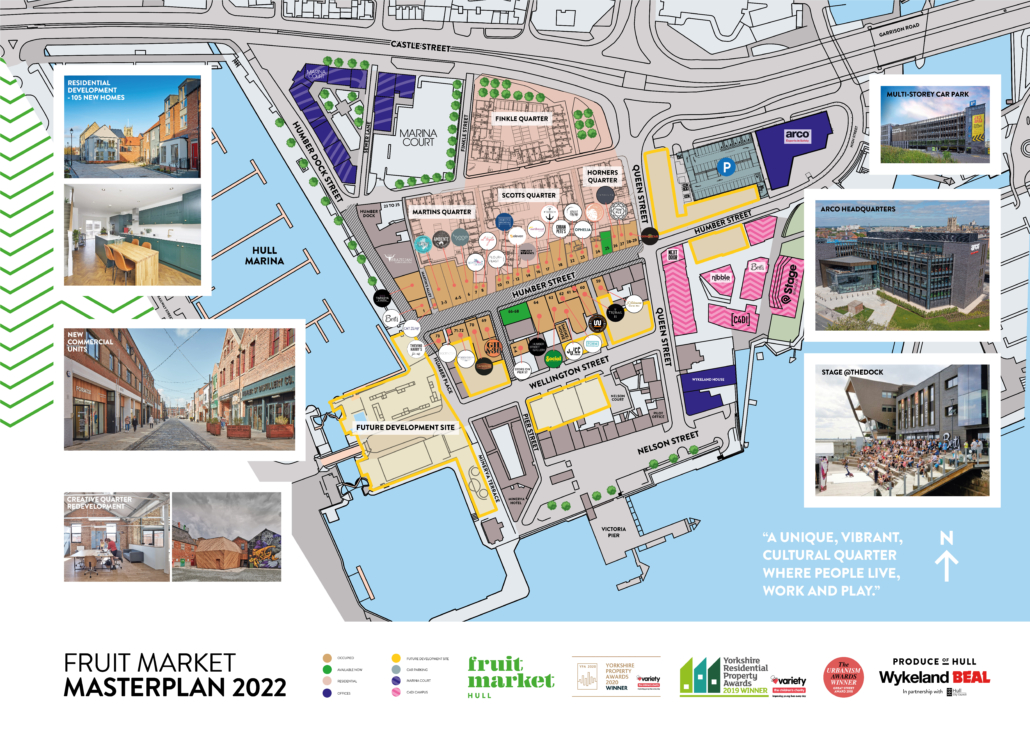
The Fruit Market Masterplan – Source: Wykeland Beal
Humber Street
Humber Street was first on the Hull Fruit Market agenda. Completed in 2016, it is still the most successful part of the project.
Fruit and vegetable warehouses were sensitively renovated to retain their character. Structures beyond repair were demolished and rebuilt in a style that complimented the original buildings.
Humber Street has been completely transformed into a new artistic hub. It has become a creative mixed-use quarter catered to galleries, street art, independent retailers, restaurants, and bars.
The street was pedestrianised and incorporated some of the original cobbles.
Urban Village
Hull’s first urban village, which started construction in 2018, was completed in 2023. The £24 development is home to around 300 residents, ranging from young couples and professionals to families and retired people.
The development features a variety of high-quality new homes, including townhouses and duplex apartments, arranged over two and three floors, created on a brownfield site. The development’s design has blended traditional and contemporary styles to create an attractive and sustainable community in keeping with the character of the Fruit Market.
The urban village also includes a green space for residents and visitors.
C4DI
C4DI, a tech campus, has been developed to support the growth of Hull as a digital hub. It has already helped the generation of hundreds of high-skilled digital jobs.
What has the impact of the regeneration of Hull’s Fruit Market?
Over 20 new businesses have emerged in the Fruit Market area, directly resulting in over 250 new jobs. The broader region, renowned as Hull’s creative and tech hub, has seen even more job opportunities arise.
With the aim of the Big City Plan to enhance Hull’s tourism, the revitalised waterfront has become a primary attraction, as evidenced by the 12% year-on-year footfall increase.
The Fruit Market now houses many independent businesses, contributing significantly to Hull’s local economy.

